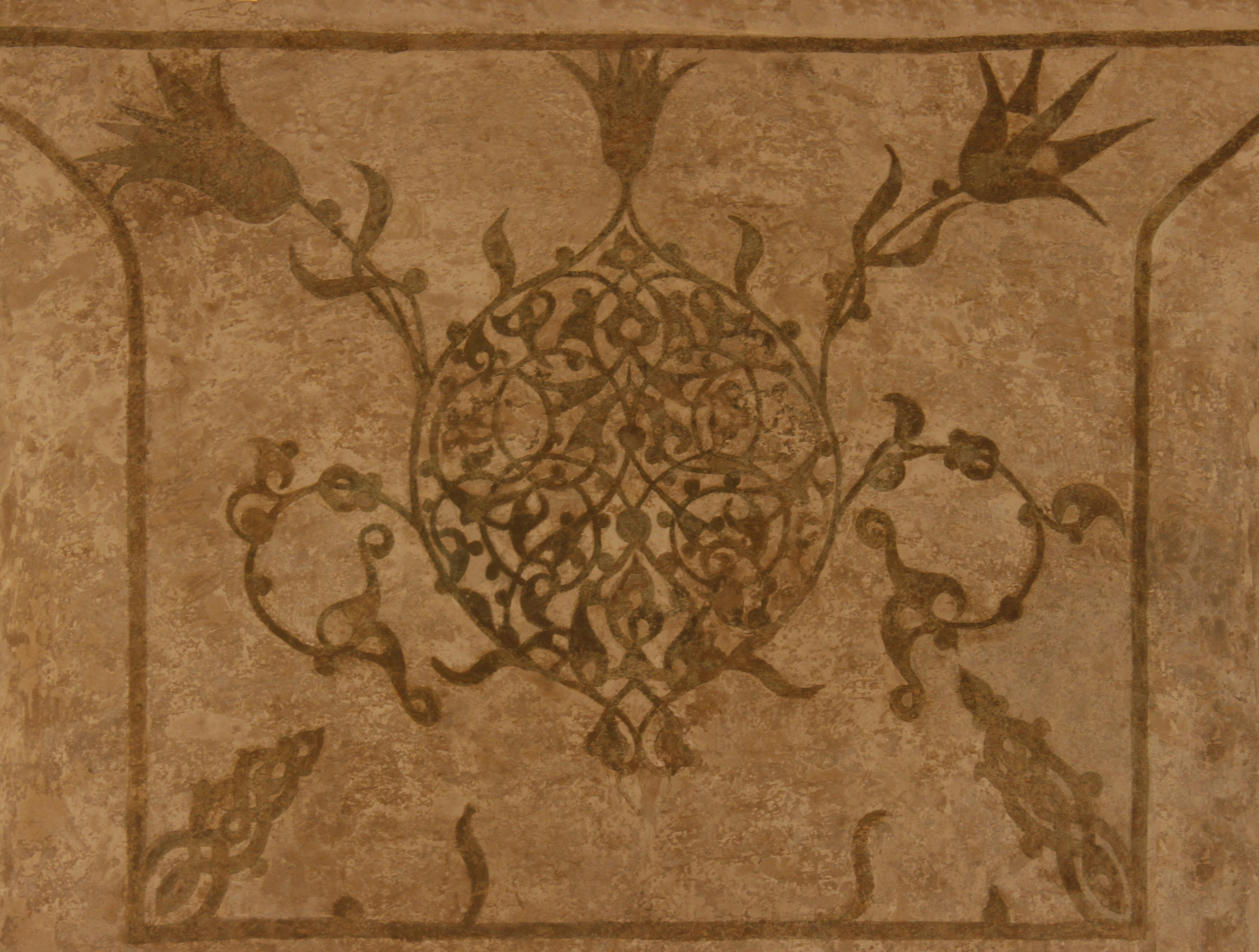- Era13th century
- Project DirectorMay al-Ibrashy
- LocationCairo
- AffiliationThe Built Environment Collective (Megawra)
- Project SponsorAntiquities Endowment Fund & Barakat Trust
- Project Dates2013-2015
When the only woman to rule Egypt in the Islamic period was considering where she wanted to be buried, she could have chosen from many hallowed locations, including her husband’s mausoleum. Instead, ‘Ismat al-Dawla Shajar al-Durr, sultana of Egypt for 80 days, selected a location near shrines to notable women descended from the prophet Muhammad.
The result in 1250 was a palatial garden complex that probably included a mosque, minaret, bath and oratory, all surrounding a domed mausoleum that forever honors this legendary woman from Egypt’s past.
Today, seven centuries after the storied Shajar al-Durr created her monument, only the mausoleum remains on bustling al-Khalifa Street in Historic Cairo. But its eight-windowed dome proudly stands restored as part of an ARCE-funded revitalization designed to show the neighborhood’s residents how Egypt’s history can become a catalyst for everything from healthier children to workplace collaboration. The work on the mausoleum also demonstrates how the art and science of modern conservation techniques have evolved and adapted to confront the ravages of both time and previous, faulty restorations.
The ARCE Antiquities Endowment Fund supported the conservation with added funds from the Barakat Trust in the UK. Three years of delicate, fastidious conservation focused on the square main chamber and its keel-shaped dome with eight windows. Inside, a glass mosaic mihrab (the Mecca-pointing niche) shines as the only remaining example of its kind in Cairo, its central motif a tree of pearls in reference to Shajar al-Durr’s name. Also restored are the painted polychromy, carved stucco and two ornamental friezes, including the one that names Shajar as the monument’s founder, as mother of Khalil and as sultana.
The mausoleum came to be known as al-Khalifa only in the Ottoman period, after a reference was added to the dome for Abbasid Caliph Muhammad al-Khalifa. While this second figure cannot be historically authenticated, the name was accepted as a more important burial than Shajar al-Durr to the point that not only the shrine but the whole Cairo street came to bear the name.
This evocative legacy with its inextricable link to the historic street ties into the wider scope of an initiative called Athar Lina (Heritage is Ours). The program connects nearby residents and other stakeholders in conservation and development to transform heritage into a communal resource. If residents see benefits from the history in their midst, they will be more likely to support or join in long-term preservation.
In this way, the conservation of the dome became a nucleus for a wider intervention that includes the rehabilitation of the adjacent mosque into a community center and the conservation of the Fatimid domes opposite Shajar al-Durr with funding from the U.S. Department of State Ambassador’s Fund for Cultural Preservation. The Athar Lina project also is implementing social and cultural goals in collaboration with the Built Environment Collective-Megawra that include a heritage education program for neighborhood children and women, participatory research on the street’s waste handling, a project in which local artisans exchange skills with designers and a tourism promotion program. That latter project established an annual festival called Spend the Day in Khalifa, which for five years has joined residents and visitors in a celebration of the street’s past and living heritage. The Athar Lina urban research and rehabilitation program focusing on services, infrastructure and public space received further funding from ARCE in 2016 for a conservation school focusing on groundwater problems in historic settings.
The mausoleum’s architecture and decorative features were important reasons it was chosen for conservation. The dome’s chamber is 538 square feet (50 square meters), made of brick walls topped by the keeled dome with tripartite, octagonal windows and two tiers of squinches – architectural features built to transition angled walls to a domed ceiling. The dome squinches and spaces between the windows are decorated with delicately painted medallions and arabesques that could barely be seen when work began. Among the treasures were the glass mosaic mihrab. At risk from neglect were the painted polychrome on the interior below and between the windows, carved stucco decoration above the mihrab and three doors and the painted wood frieze naming the mausoleum’s honoree.
The poor state of preservation was of special concern. While the dome was structurally sound, work done at the site in the past 20 years created its own risks. Conservation efforts from the 1990s into the early 2000s led to the walls and dome being plastered with thick cement. This attempt to fortify and preserve instead accelerated damage caused by rising, salty dampness from subsurface water, and cement plaster contributed its own alkaline salts as it prevented the release of water through evaporation. The result was salt damage to the masonry and the disintegration of mortar. Further damage was caused by cement splatter on the carved and painted stucco and on the upper frieze.
After the first year of the ARCE-funded conservation project, from November 2013 to October 2014, exciting but daunting discoveries – including from those previous conservation projects – added to the project’s obstacles:
First, the team found that eight medallions between the dome windows and the decorative polychrome on the squinches of the transitional zone were not covered by the grimy deposits of time. Rather, they had been coated with a layer of plaster, probably in the 19th century. This meant the paint below the plaster had to be consolidated before the plaster itself was removed with scalpels in a meticulous, time-consuming process. The upper inscription frieze also was found to be partially covered in cement instead of grime. The scalpel work became even more delicate to remove the cement without damaging the original paint.
The team decided after this consultation to avoid more work on the mihrab and focus on other areas of the mausoleum. The work continued for several seasons, ensuring the preservation of another of Cairo’s historic shrines.
